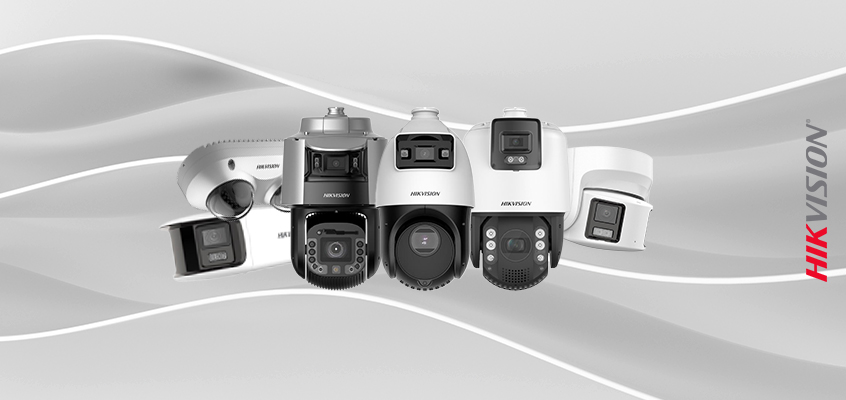Score Big With the Benefits of Hikvision’s Multi-Sensor Cameras: TandemVu, PanoVu, and Panoramic Series Cameras

Hikvision’s collection of innovative, multi-sensor cameras delivers multi-directional monitoring for advanced security. These cameras detect and classify events over expansive areas—that means fewer cameras are required to cover more property—which helps you maximize your investment and enhance security. Additionally, these products are easy to manage, requiring only one IP address while capturing multiple images from each camera. Users will appreciate TandemVu’s imaging in particular, with 360-degree rotation or panoramic views with wide, 180-degree coverage.
TandemVu PTZ Series cameras with ColorVu technology combine a bullet camera and a PTZ camera into one unit. This way, you get the big picture and small details using only one camera. Users can pan, tilt, and zoom without missing anything in the general view. Newly released models feature ColorVu technology, which provides color imaging even in total darkness. They are ideal for industrial parks, schools, public squares, parking lots, crosswalks, and express ways, among other areas.
Other features of the TandemVu PTZ camera include:
- 2-channel output
- Fast linkage between 2 channels
- Classified object detection
Hikvision will soon release new versions of the 7- and 8-inch TandemVu PTZ cameras with 180°-smart linkage and optimized performance compared with previous 7 and 8-inch models. Keep an eye out for that announcement in May.
The Dual Lens PanoVu cameras easily adjust to any angle to focus on critical details. A built-in microphone brings real-time audio security while providing long-lasting outdoor performance with water and dust resistance (IP67). Vandal resistance (IK10) is also included.
Hikvision’s Panoramic 180-degree series with ColorVu and dual lenses render outstanding 4K UHD resolution. This series also delivers broad views with two 4-mm fixed focal lenses and 180-degree horizontal viewing. This series is designed for proactive deterrence with its audio and strobe light features.
Watch the video here to learn more about these cameras. And contact your local Hikvision representative today to help you select the best multi-directional camera for your project.
